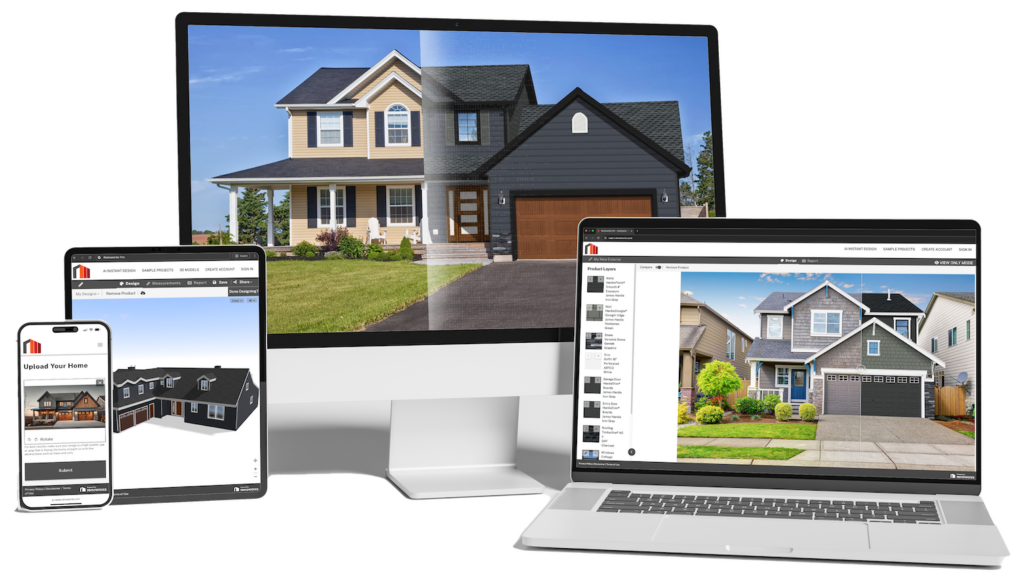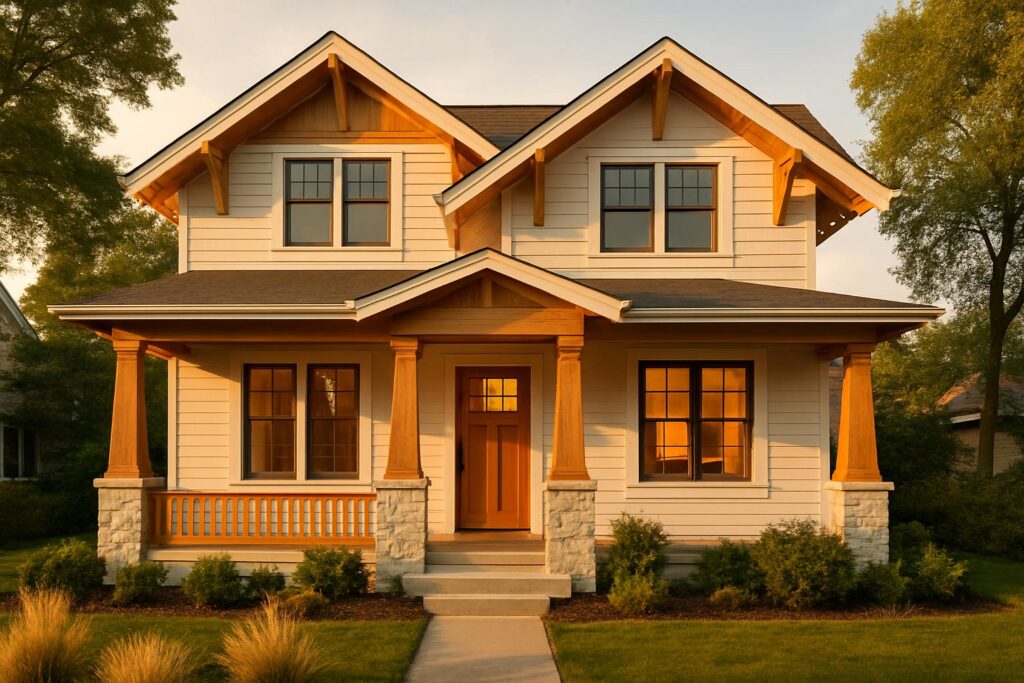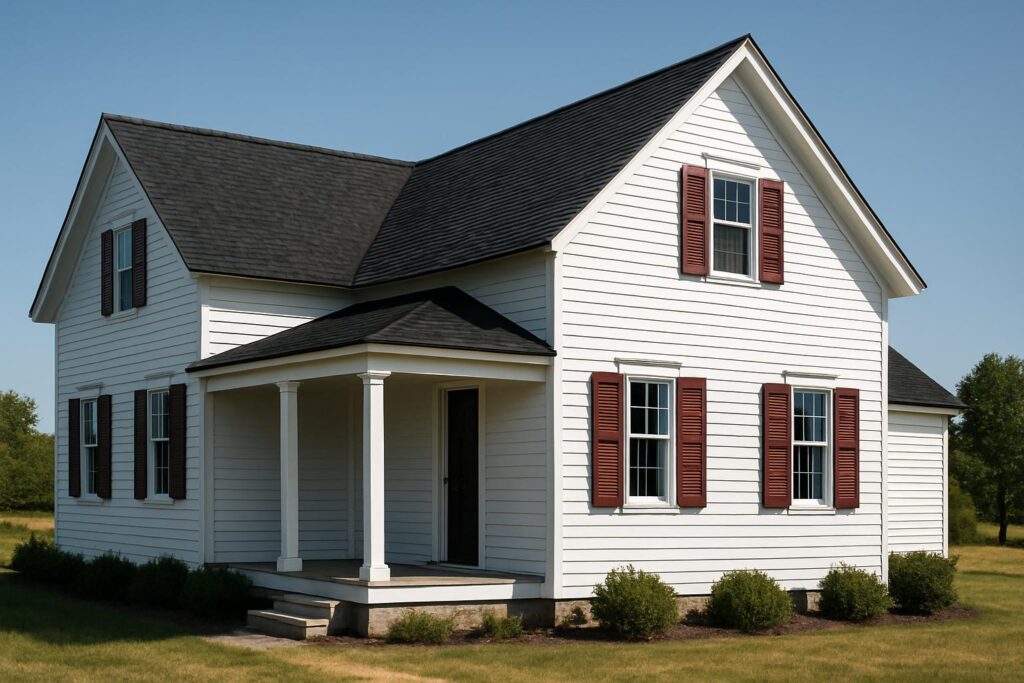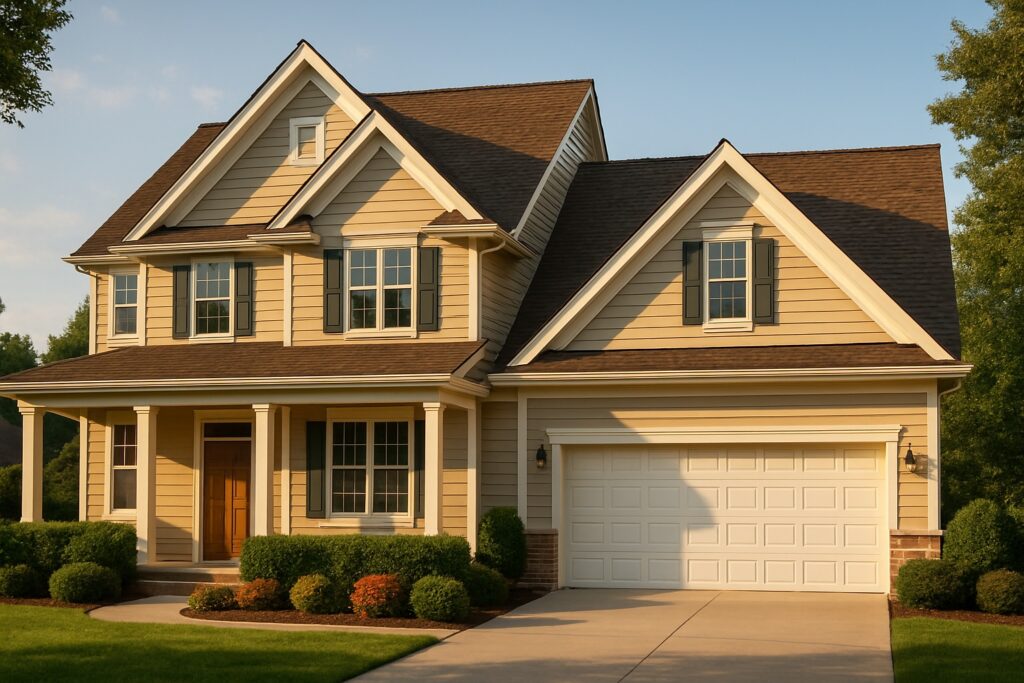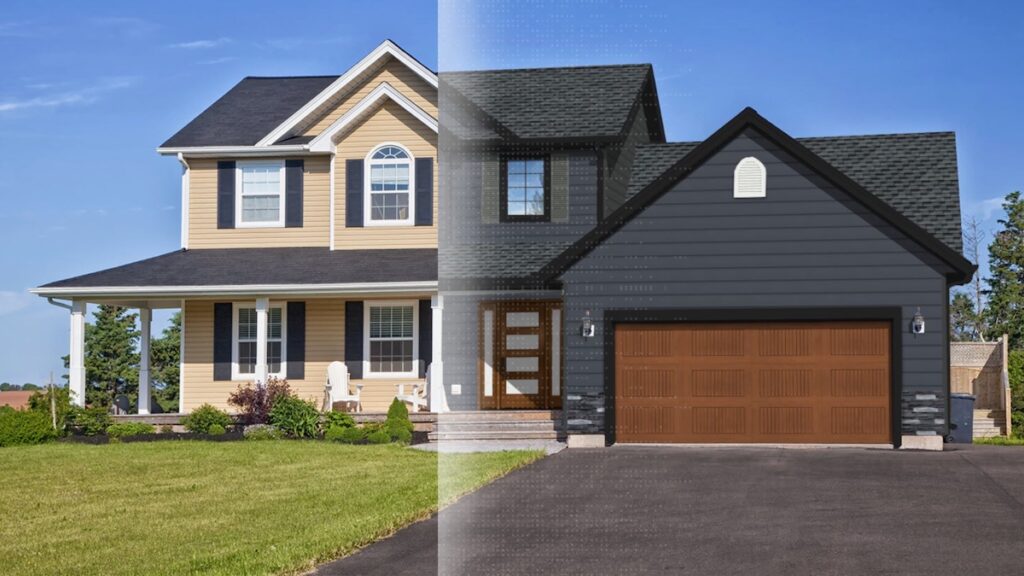TLDR
If you’re short on time but want a quick breakdown of what vinyl siding offers in 2025, here’s everything you need to know at a glance.
Average cost per sq ft: $2–$7 (standard) / $5–$10 (insulated)
Total cost for 2,000 sq ft home: $6,000–$14,000
Popular styles: Clapboard, Dutch lap, board and batten, vinyl shake, brick-look
Cheapest siding alternative: Standard horizontal vinyl siding
Top competitors: Fiber cement, wood, brick
Want to see how these styles and materials would look on your home? Try our free siding visualizer to explore your options in real time.
Introduction
As a homeowner, you want to make sure you have the best exterior siding for your home. Vinyl siding is a popular choice since it is durable and easy to maintain. There are different types of siding available, depending on your budget and desired look. In this blog post, we will discuss the pros and cons of various types of vinyl siding so you can make an informed decision.
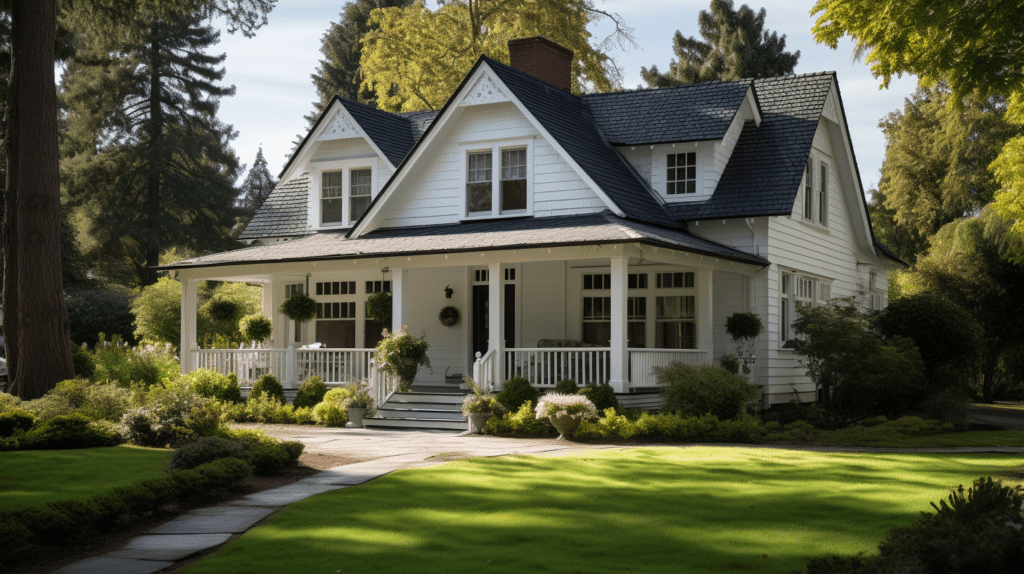
Vinyl Siding
Vinyl siding is one of the most popular cladding options for home exteriors due to its affordability, durability, and range of colors and styles. Vinyl siding is also low maintenance and energy efficient, making it a great choice for homeowners looking to save money while also improving their home’s curb appeal. Learn how to boost curb appeal with vinyl and other materials through smart design choices. In addition, vinyl siding is lightweight and easy to install, making it a great choice for DIYers.
Vinyl siding is also resistant to moisture, UV rays, and insects, making it a great choice for climates with extreme weather conditions. Vinyl siding is also fire-resistant, making it a safe option for homes in areas prone to fires. With its wide range of colors and styles, vinyl siding is an attractive and affordable option for homeowners looking to upgrade their home’s exterior. Whether you’re looking for a low-maintenance option, something fire-resistant, or something that can stand up to extreme weather conditions, vinyl siding is an attractive and affordable option for any home. It’s easy to install, low-maintenance, and energy-efficient, making it a great choice for homeowners looking to upgrade their home’s exterior. Compared to other siding materials such as wood siding, brick siding, or stone veneer siding, vinyl siding offers excellent value.
Texture and Profile Styles
Vinyl siding comes in a variety of textures and profile styles, giving homeowners numerous options to choose from. The most popular texture and profile styles include traditional lap siding, Dutch lap siding, vertical siding, shake siding, and board and batten siding.
-
Traditional Lap Siding: Classic, overlapping horizontal panels, easy to install, durable, and energy-efficient.
-
Dutch Lap Siding: Similar to traditional, with a curved top edge for a more intricate profile.
-
Vertical Siding: Modern style with a sleek, contemporary look.
-
Shake Siding: Textured style that replicates wood shakes.
-
Board and Batten: Often used in farmhouse-style designs, this siding material has strong insulation properties.
Each texture and profile style has its unique aesthetic, providing homeowners with a variety of siding options to choose from, depending on their house siding style and desired curb appeal.
12 Types of Vinyl Siding
Clapboard
Clapboard vinyl siding is a popular option for homeowners looking for a traditional look. It is known for its durability and low maintenance requirements, making it a popular choice for both new construction and remodeling projects. The clapboard style features horizontal boards which overlap each other, creating a unique look. Its classic style is easy to customize with a variety of colors and textures. Clapboard vinyl siding is a great option for homeowners who want a timeless look to their home. Additionally, its easy installation and low cost make it a budget-friendly choice when considering siding options.
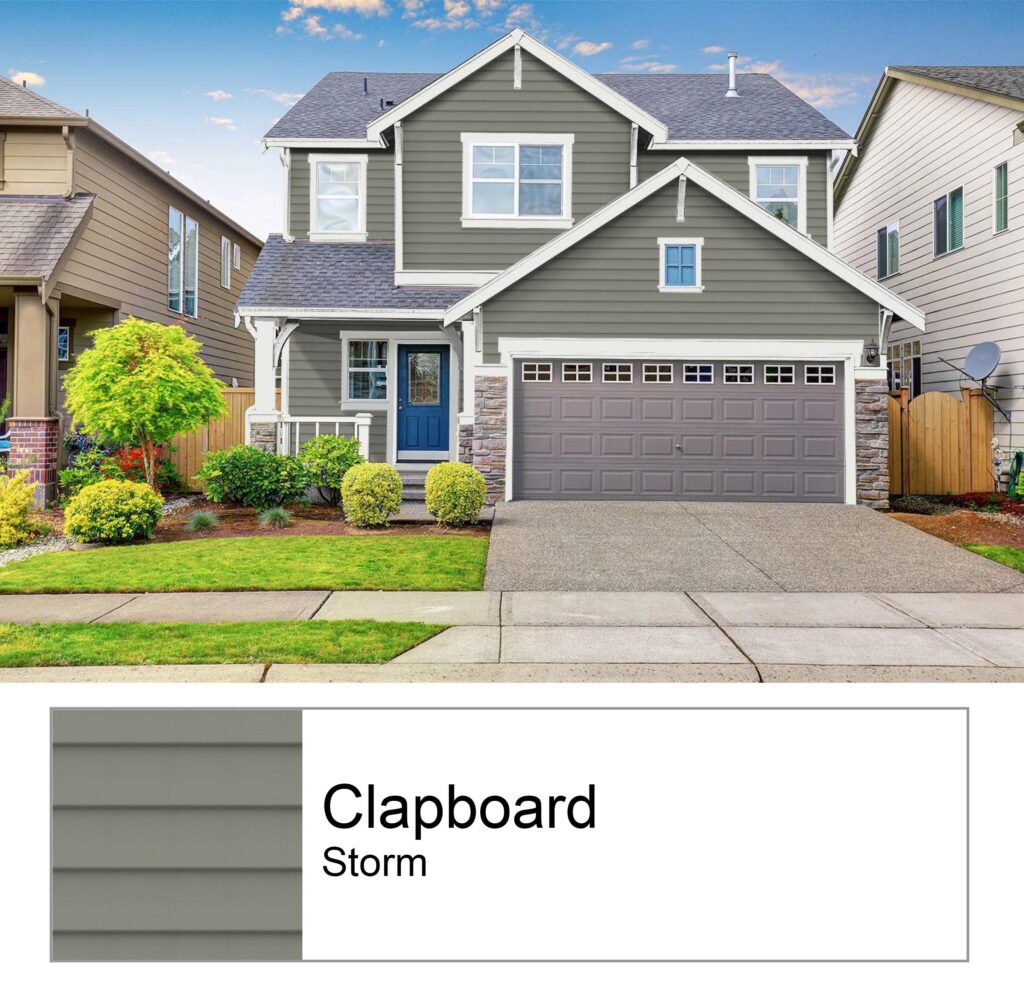
Traditional Lap
Traditional lap siding is one of the most popular types of vinyl siding. It has a classic look that is attractive and timeless. It is available in a range of widths, colors, and textures to fit any home and budget. Traditional lap siding is easy to install and requires little to no maintenance, making it a great choice for homeowners. It is also durable and resistant to weathering, providing long-term protection for your home. Furthermore, it is an energy-efficient option that can help reduce energy bills. Traditional lap siding is a great choice for any home and can provide a great look and many years of protection.
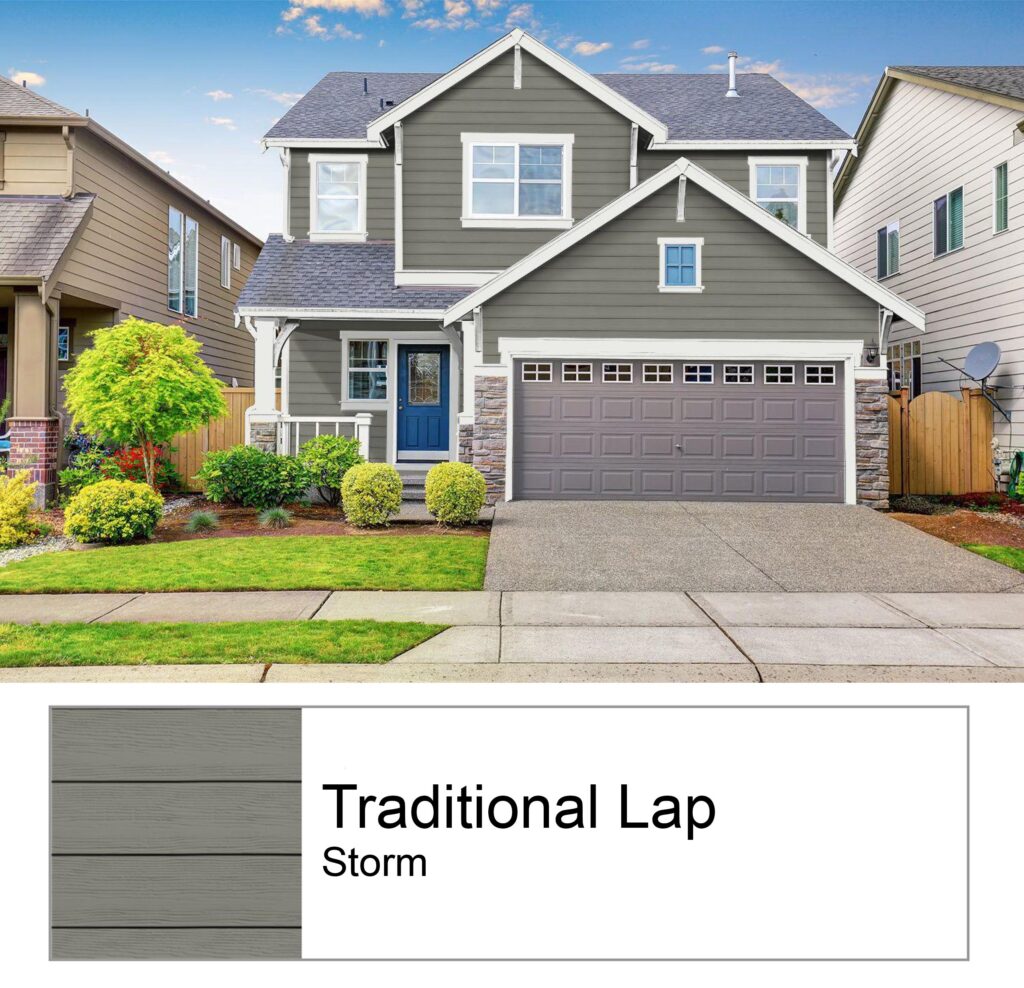
Dutch Lap
Dutch Lap is a popular type of vinyl siding, which has been in use for many years. It has a distinctive look, with a grooved pattern that runs horizontally across the siding. It is a great option for homeowners who want a classic look with a modern edge. This type of siding is available in a variety of colors, styles, and finishes, making it easy to find a product that fits the aesthetic of your home. Dutch Lap is also a great choice for homes in areas prone to high winds, as it is resistant to blow-off. It is easy to clean and maintain, making it a great option for busy homeowners.
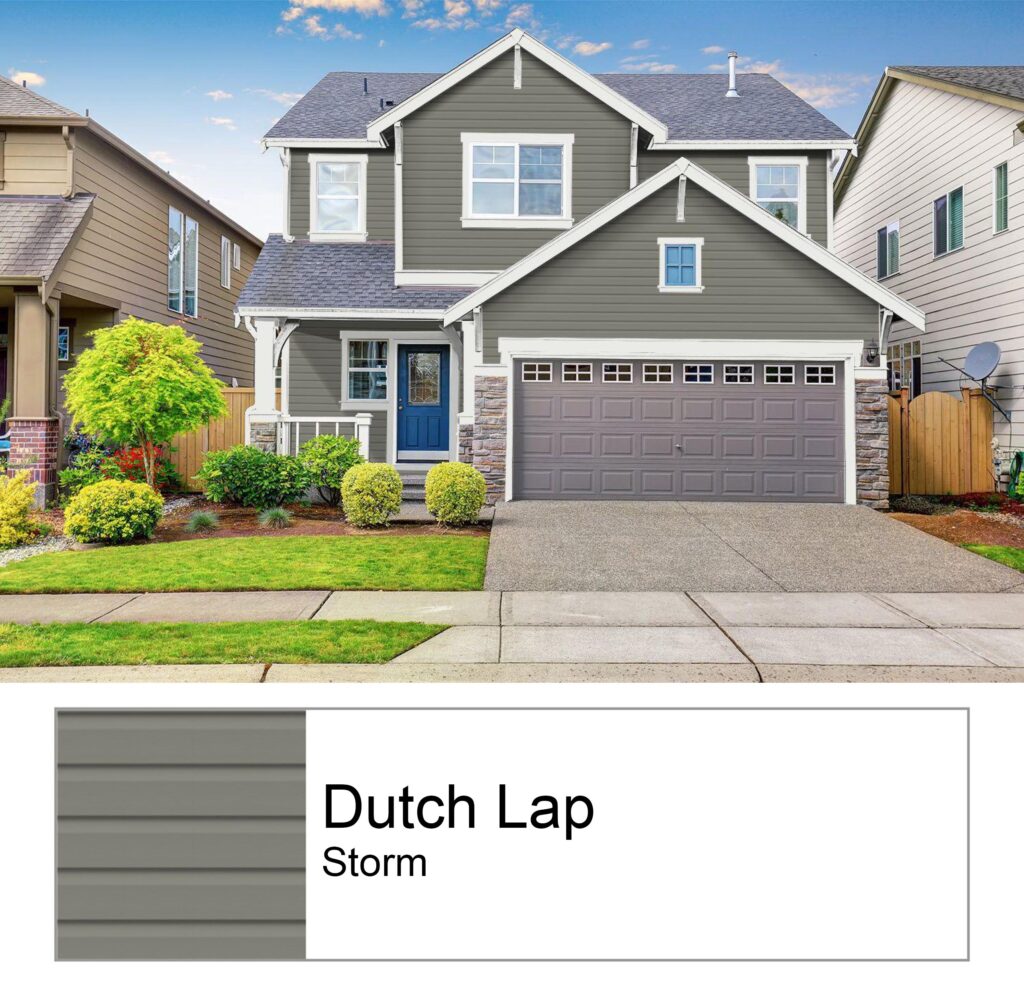
Smooth Lap
Vinyl siding also comes in a variety of textures, such as the popular “Smooth Lap” option. Smooth Lap siding provides a classic, timeless look to any home. It is easy to maintain and is available in a wide range of colors. Smooth Lap siding is also easy to install and can be customized to fit any home. Its non-porous surface is resistant to moisture, making it a great choice for any climate. Additionally, Smooth Lap siding is incredibly durable, so you can count on it lasting for years to come. With its low maintenance requirements, affordability, and classic good looks, Smooth Lap siding is an excellent choice for any home.
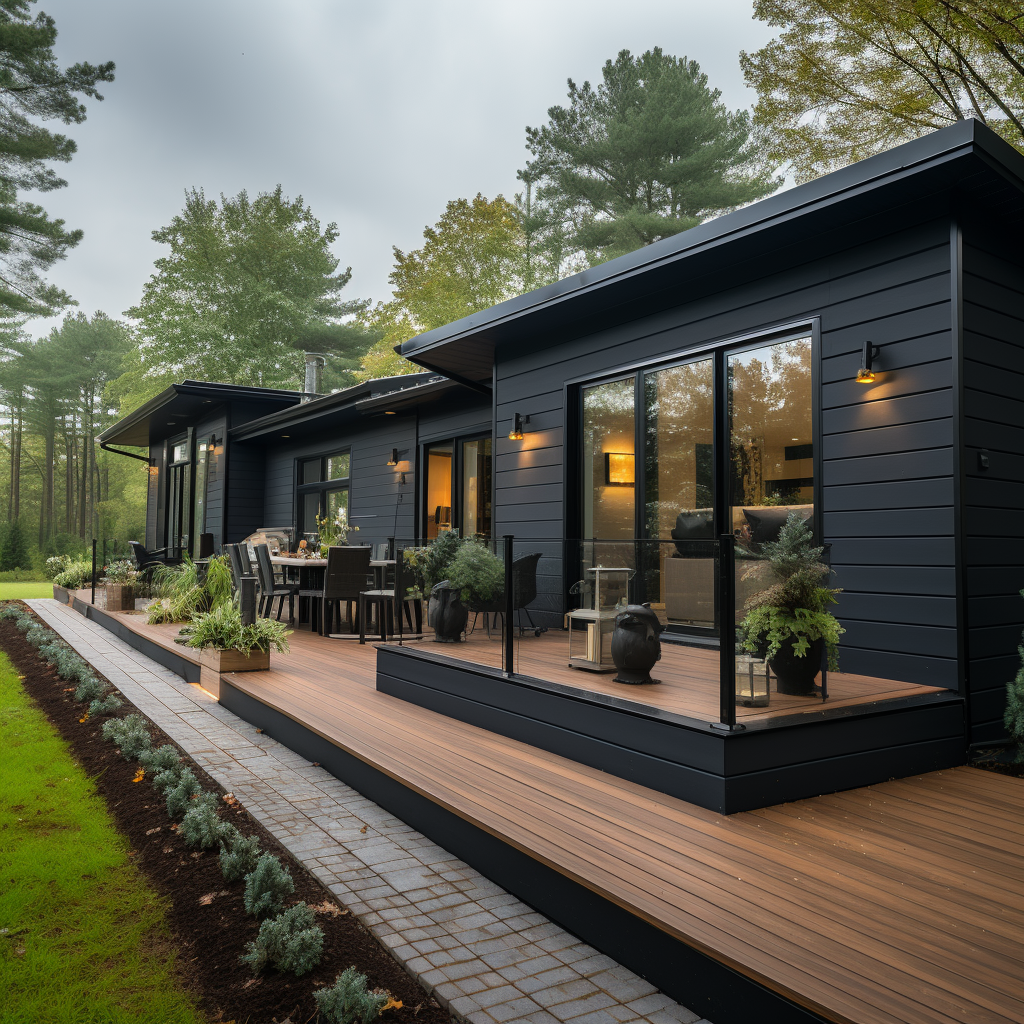
Wood Grain
Wood grain vinyl siding is the perfect choice for those seeking a natural wood look for their home. It is available in a wide variety of colors and textures, allowing you to customize your home to match your individual style. Wood grain vinyl siding is extremely durable and easy to maintain. Discover more in our guide on the benefits of wood grain vinyl siding. It won’t fade, crack, or peel and can withstand all types of weather conditions. Furthermore, it is an affordable and eco-friendly option as it is made from recycled materials. Wood grain vinyl siding is also fire-resistant and can help to reduce energy costs due to its insulation properties. This siding type can be a strong alternative to fiber cement or metal siding when evaluating performance and sustainability.
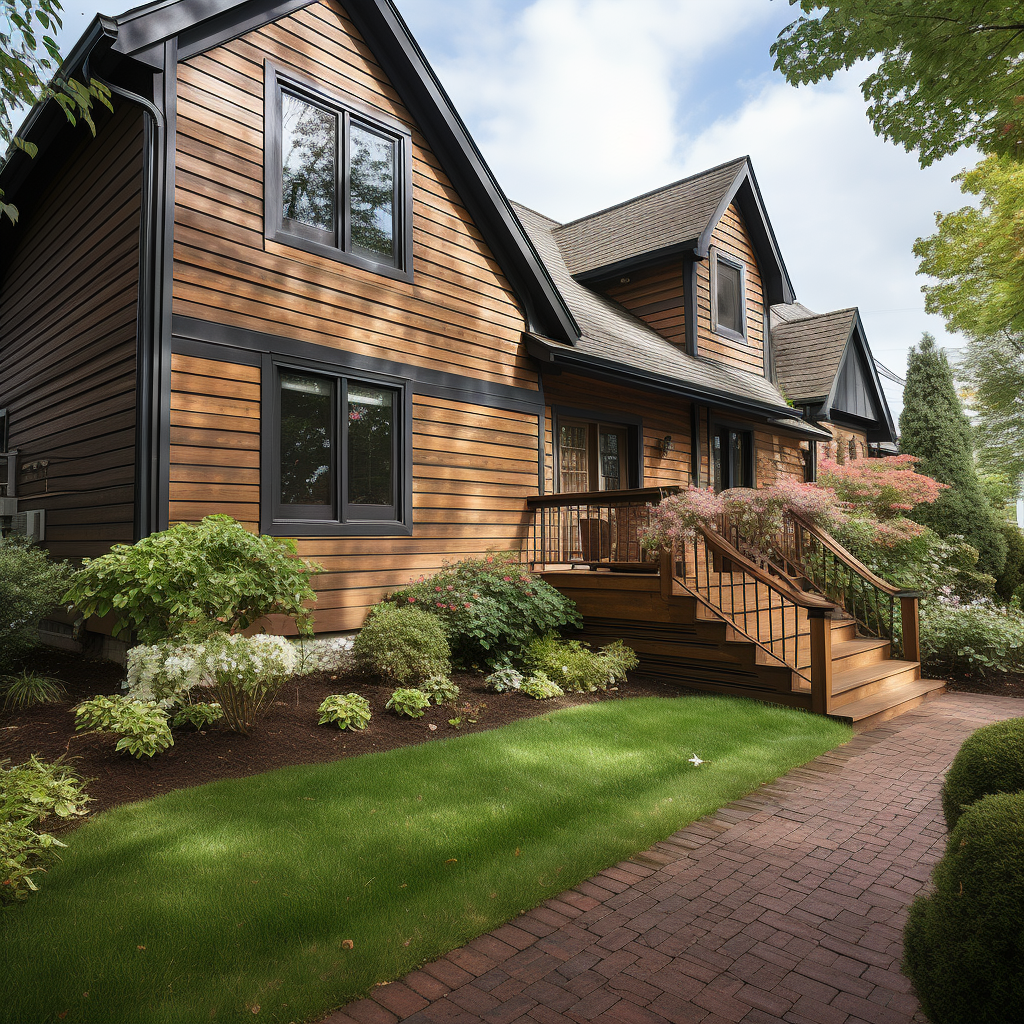
Beaded Seam
Beaded Seam is a type of vinyl siding that features a unique look and design. It has a traditional look with a series of vertical panels that are connected by a beaded seam. This type of siding is available in a wide variety of colors, styles and textures. It is also known to be strong and durable, making it an excellent choice for those who want long-lasting siding that will stand up to the elements. Additionally, it is easy to install and maintain, making it a great option for those who want to save time and money.
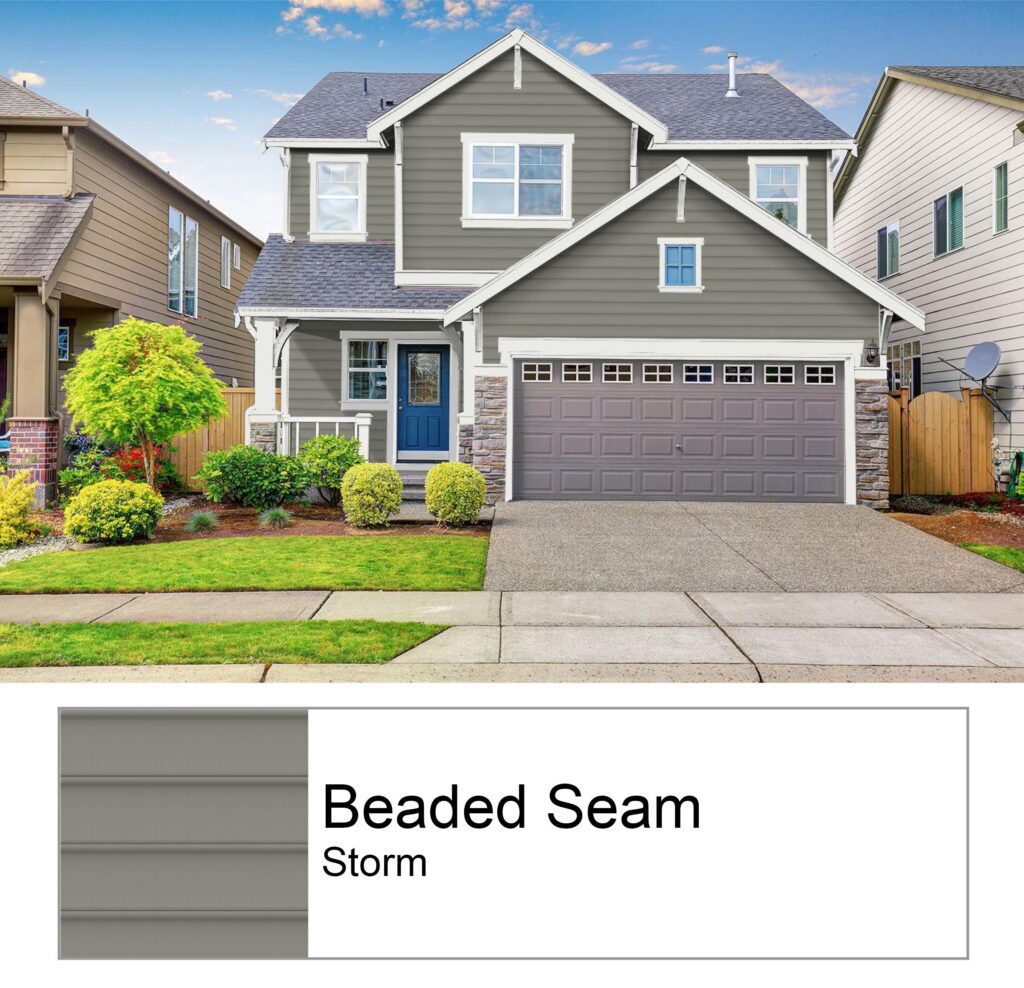
Log Vinyl Siding
Log vinyl siding is a great choice for those looking to give their home an outdoor, rustic look. It features a realistic log-style look that adds a unique aesthetic to any home. Log vinyl siding is easy to install and is available in a variety of colors. It is also extremely durable and resistant to fading, meaning it will retain its color and appeal for years to come. This type of vinyl siding is also low maintenance, requiring minimal cleaning and upkeep. Homeowners will appreciate the fact that it won’t need to be repainted or maintained regularly. Log vinyl siding is also cost-effective and can be an economical choice for those looking to add a rustic touch to their home.
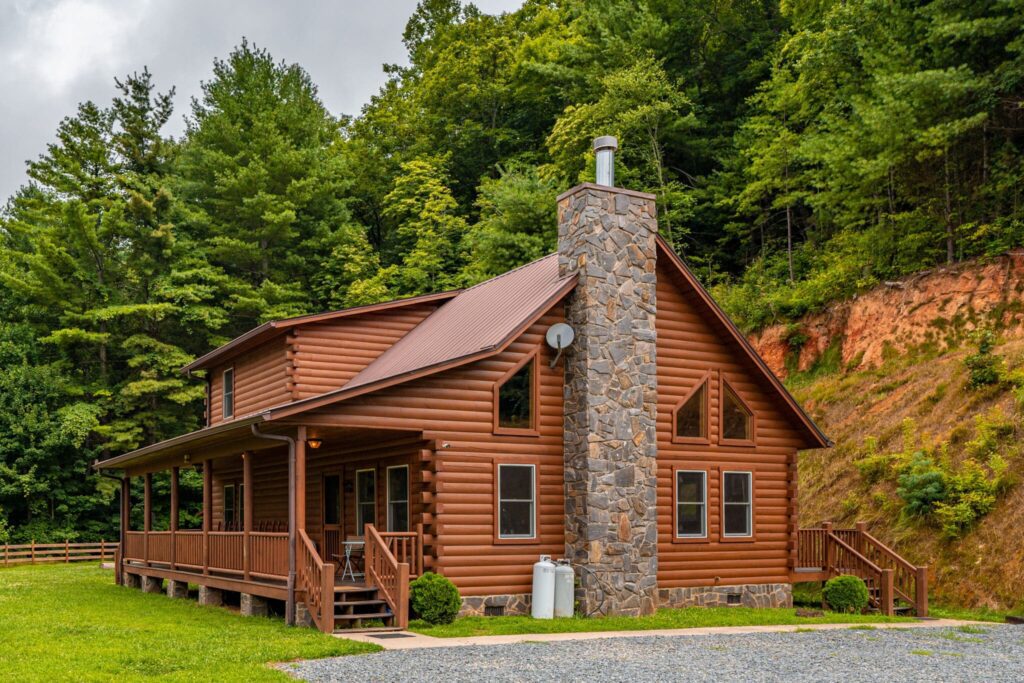
Board & Batten
Board & Batten vinyl siding is a classic look for homes, and it’s certainly a popular choice for homeowners looking to add style and character to their homes. This type of siding features narrow boards running vertically up the side of the house, with a thin strip of wood or plastic material covering the joints between the boards. It’s also a great option for homeowners looking to add more insulation to their homes since the boards fit snugly together and form a barrier against the elements. Additionally, Board & Batten vinyl siding is easy to install, easy to maintain, and comes in a variety of colors and styles to fit any home’s aesthetic. Explore more Board and Batten siding inspiration to see how this style can transform your exterior. It’s a great house siding alternative to stucco siding or fiber cement siding, particularly in colder climates.
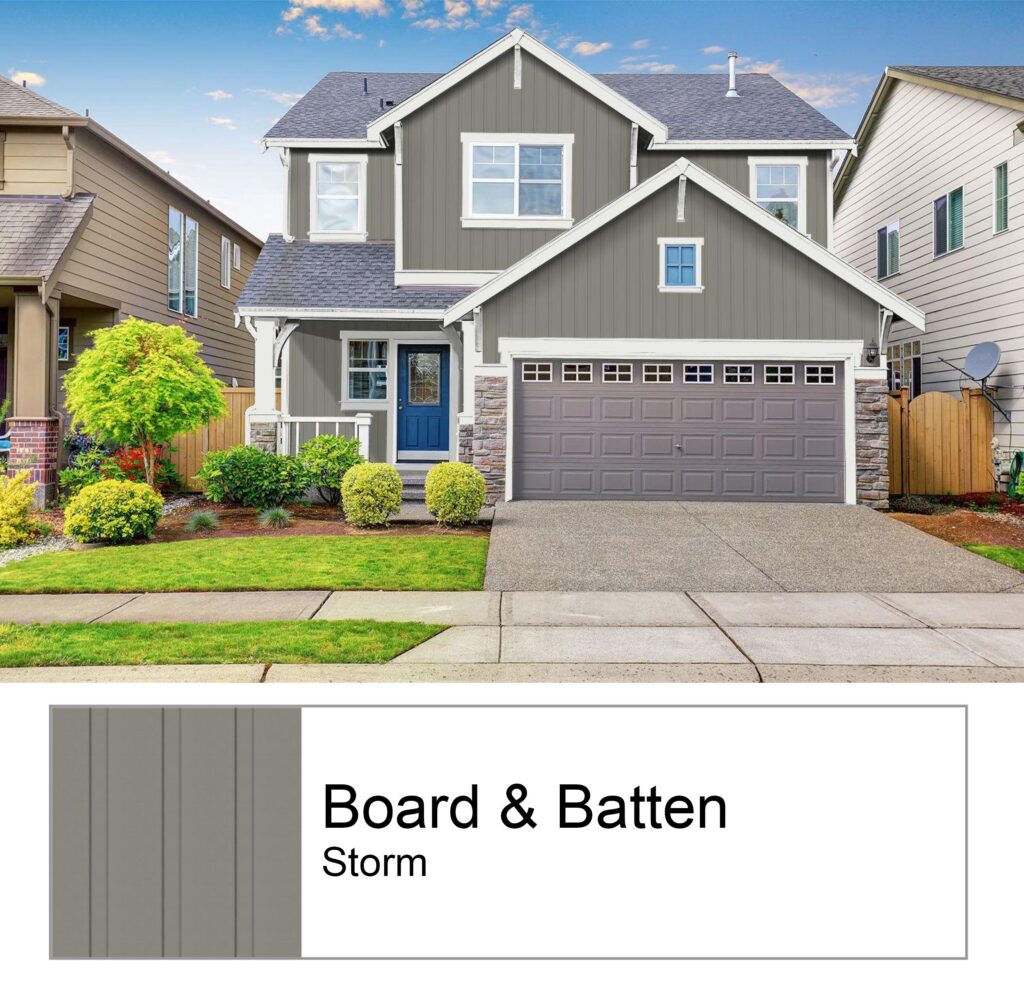
Traditional Shake
Traditional shakes siding is a popular type of vinyl siding that has been around for many years. It provides a classic look that is both timeless and appealing. Traditional shakes come in a variety of colors and patterns and can be installed with ease. With its low maintenance and durability, this type of siding is one of the most popular choices for many homeowners. Traditional shakes are also resistant to the elements, making them a great choice for those who live in areas that experience extreme weather. It also helps boost the overall value of your home, by adding curb appeal and increasing energy efficiency.
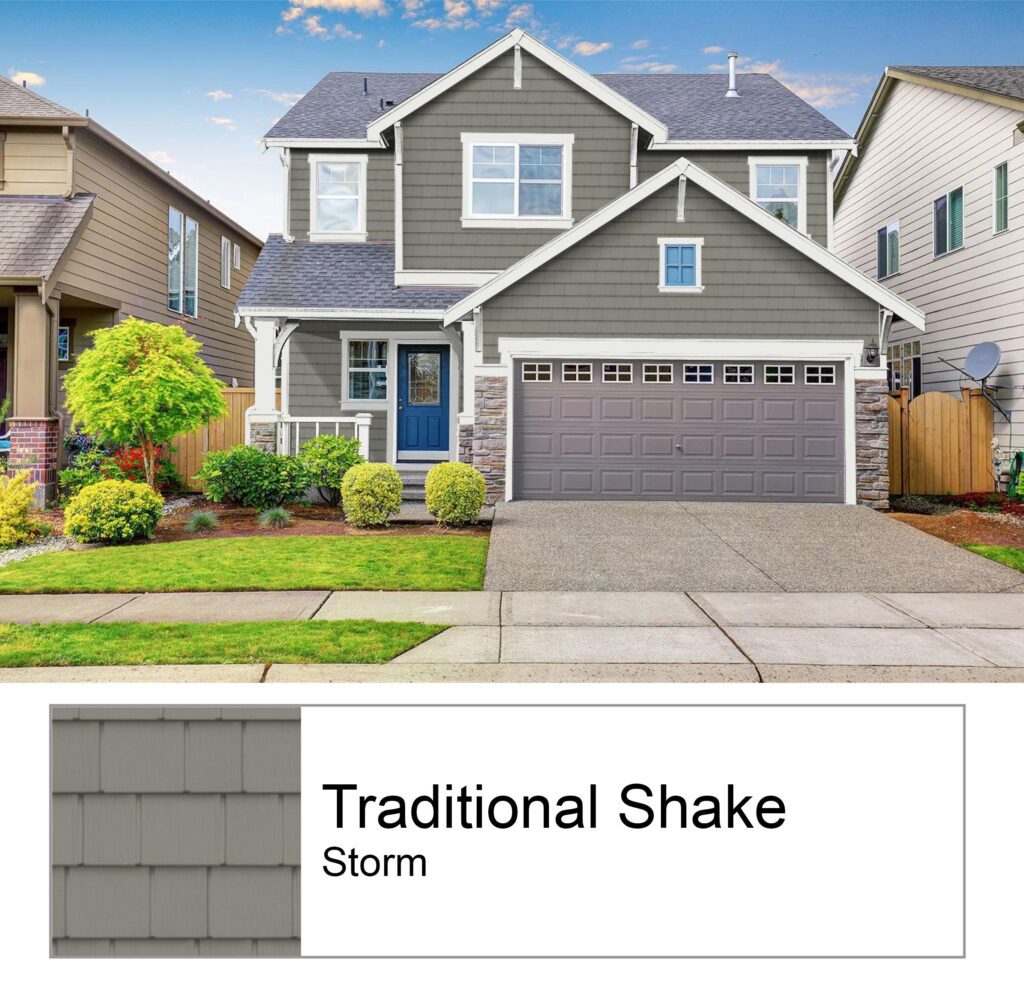
Cedar Shake
Cedar shake siding is one of the more expensive types of vinyl siding, but it offers a classic, rustic look that many homeowners find desirable. It is made from real cedar wood, which is known for its durability and natural beauty. Cedar shake siding also offers a unique texture and style that can add character and charm to any home. This type of vinyl siding will require regular maintenance and cleaning, but it is an investment that will last for years to come. It is also an eco-friendly option, as cedar shakes can be harvested responsibly and are biodegradable. Overall, cedar shake siding is a great option for those who want a classic, rustic look with low-maintenance requirements.
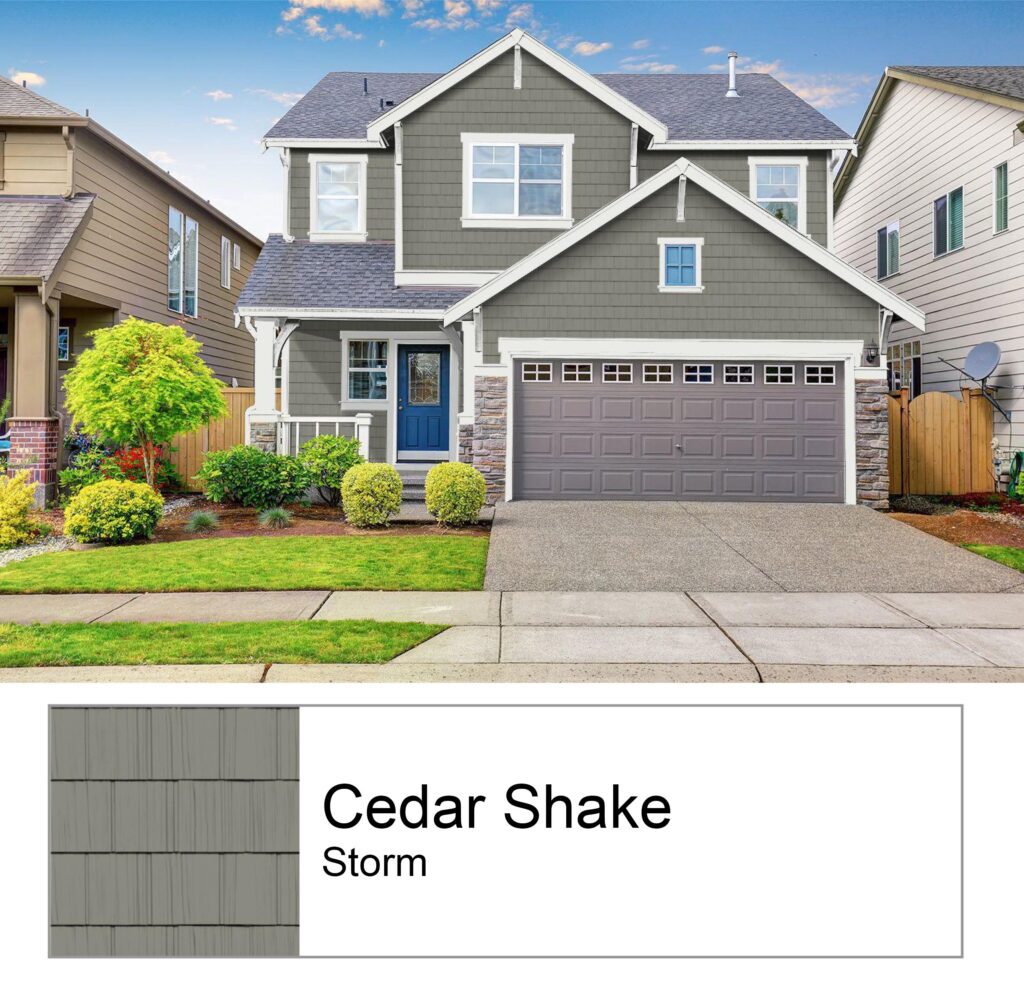
Hand-split Shake
Hand-split shake siding is made from wood that has been naturally split by hand, giving it a rugged, rustic look. It is available in a variety of colors and sizes, and can easily be customized to fit any home. It is often used to add texture and character to a home, as well as provide a unique visual appeal. Hand-split shake siding is more expensive than other types of siding, but it is very durable and can last a long time. It is also low maintenance and can be easily cleaned and maintained with a pressure washer. It is a great option for anyone looking for a unique and unique look for their home.
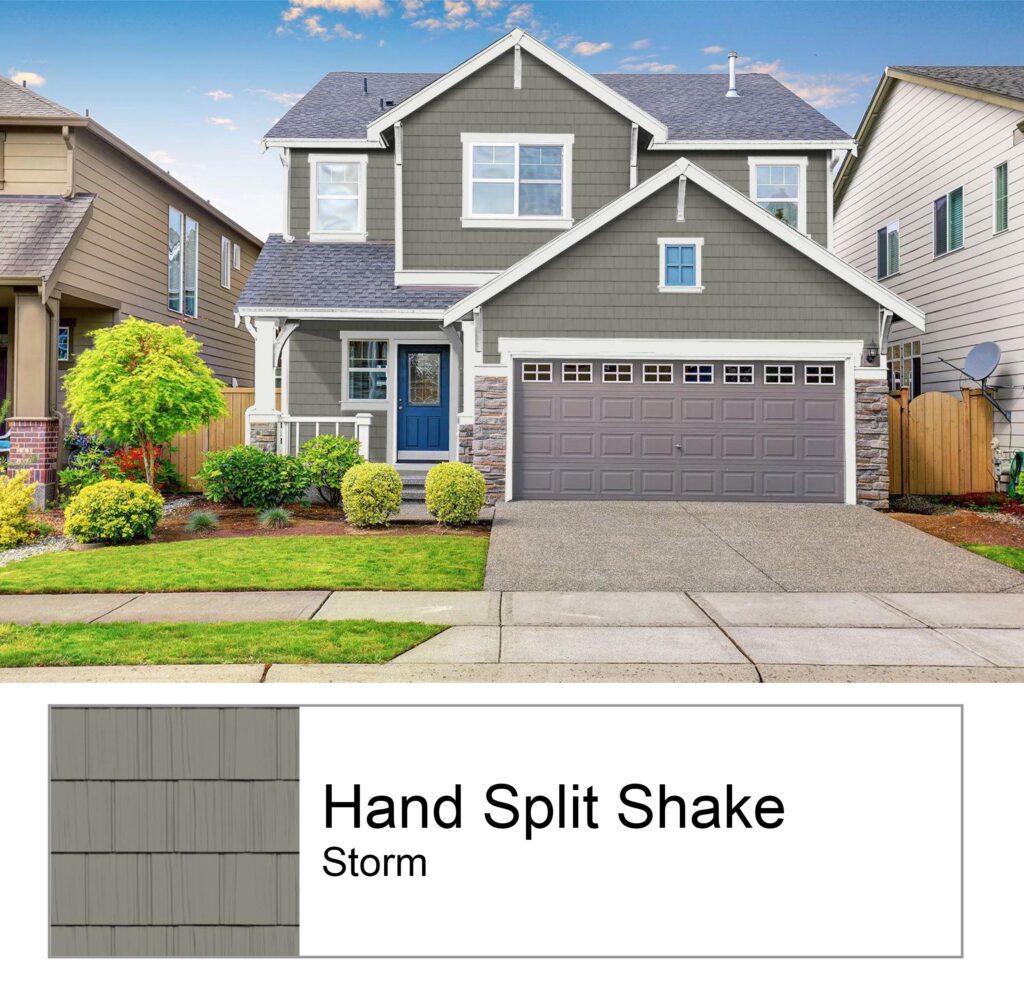
Half-round (Scalloped)
Half-round (Scalloped) siding is a unique and stylish option for any home. It has a rounded look that is similar to that of a fish scale, giving it a unique and eye-catching appearance. The half-round shape helps to give the home more dimension, drawing the eye upward and outward from the foundation. It is also an easy style to install, and with its durability, it can last for many years. Furthermore, this style of siding is available in a variety of colors, making it easy to match the look of your home to your tastes.
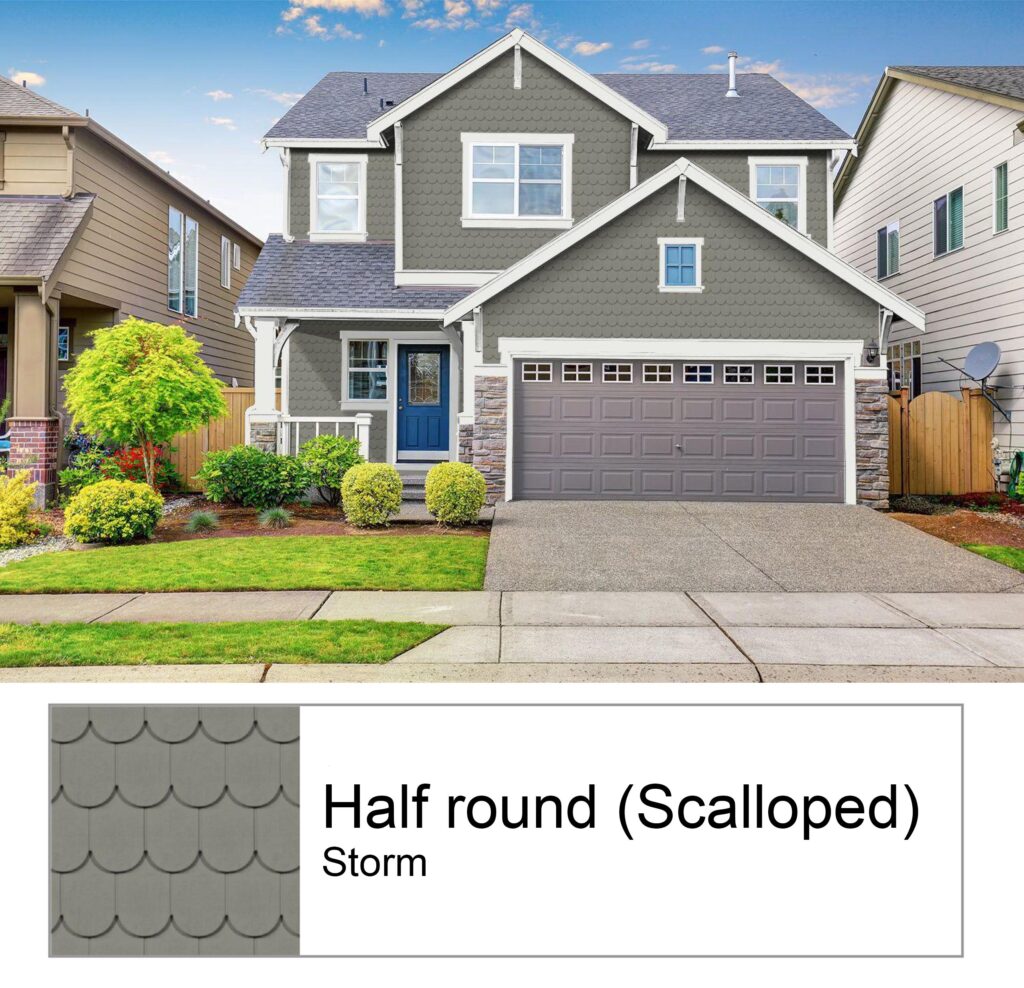
Standard vs Premium Siding
In the realm of vinyl siding, homeowners have two main options to consider: standard and premium. While standard vinyl siding is a thinner material, offering affordability for those on a budget, premium vinyl siding provides a thicker material designed for increased insulation and durability. Suited for long-term investment, premium siding is more expensive than the standard option, but both varieties present a wide selection of colors and styles. This diversity ensures that individuals can choose the ideal siding to complement their home’s aesthetics, balancing considerations of cost, appearance, and function. Whether looking for a cost-effective solution or a high-quality, long-lasting product, vinyl siding offers options to meet different needs and preferences. Compared to fiber cement, stone veneer, or brick siding, vinyl remains one of the most popular siding materials in North America.
Lifespan and Maintenance
How Long Does Vinyl Siding Last?
Vinyl siding is a popular choice for many homeowners looking to update their home’s exterior. If you’re unsure which material is best long term, check out Composite vs. Vinyl Siding: What’s the Difference? It’s durable, low maintenance, and comes in a variety of colors and textures. When installed correctly, vinyl siding can last for decades. The average lifespan of vinyl siding is between 25 and 40 years, though it may last even longer if proper maintenance is performed. To ensure your vinyl siding lasts for as long as possible, it’s important to inspect it regularly for any signs of wear, such as chipping, cracking, or fading. Regularly cleaning and caulking around seams can also help keep your vinyl siding in good condition for years to come.
How to Care for Vinyl Siding
Vinyl siding is a great choice for homes due to its durability and low maintenance requirements. To ensure your vinyl siding remains in good condition, it is important to regularly clean it to get rid of dirt and grime. To do this, you should use a soft brush and a mild detergent solution to scrub the surface in a circular motion. Be sure to rinse the siding thoroughly afterwards with a garden hose. Additionally, it is important to inspect the siding periodically to look for any cracks or loose pieces that need to be repaired. If you notice any damage, it is best to call a professional to repair it. Taking these steps will help keep your vinyl siding looking great and will ensure it lasts for years to come.
Additional Considerations for Siding Material
When comparing siding materials, it’s helpful to assess not just appearance, but also performance over time. Brick siding is known for its longevity and durability, but it often comes at a higher installation cost and limited design flexibility. On the other hand, fiber cement siding provides exceptional resistance to fire and pests, though it tends to be heavier and more difficult to install than vinyl. Homeowners seeking a lightweight, low-maintenance solution with broad curb appeal often find vinyl siding to be the most practical option.
Metal siding, while sleek and contemporary, may dent more easily and require more specialized installation. Meanwhile, stone veneer siding offers a high-end look but is generally more expensive and labor-intensive. House siding in general should reflect your local climate needs, desired maintenance level, and long-term investment goals. Vinyl continues to be one of the most balanced and versatile types of siding, making it a solid contender across these categories.
Conclusion
Choosing the right vinyl siding for your home involves considering factors like durability, appearance, maintenance requirements, and budget. From the classic appeal of Traditional Lap to the rustic charm of Log Vinyl Siding, or the unique aesthetics of Half-round (Scalloped) siding, there’s a style to match every homeowner’s taste and need. Whether you prioritize the affordable option of standard siding or opt for the long-term investment in premium siding, understanding the various textures, profile styles, and characteristics of each type empowers you to make an informed decision. Vinyl siding versatility in appearance, coupled with its long lifespan and minimal maintenance requirements, continues to make it a popular choice among homeowners. Your home’s exterior can reflect your style and provide functional benefits, all while adding value to your property. For those evaluating multiple siding materials, be sure to compare fiber cement siding, stucco siding, wood siding, and brick siding as part of your final decision.
For more help choosing your siding, see our Top 6 Siding Options for Your Weather Climate.
FAQs About Vinyl and Other Types of Siding
What are the main differences between fiber cement siding and vinyl siding?
Fiber cement siding is heavier and offers higher fire resistance, but it typically costs more and requires professional installation. Vinyl siding is lighter, more DIY-friendly, and easier to maintain, making it popular for residential projects.
Is stucco siding a good alternative to vinyl?
Stucco siding provides excellent insulation and a smooth, textured appearance. However, it may not be as versatile or affordable as vinyl siding and requires regular inspection to prevent moisture damage.
How does stone veneer siding compare in terms of durability?
Stone veneer siding delivers an upscale, natural look and is highly durable. That said, it comes at a premium cost and is not as easy to install or maintain as vinyl.
When should I consider metal siding over vinyl siding?
Metal siding works well for modern or industrial designs and holds up in extreme weather. It may not offer the same range of textures and profiles as vinyl, and dents are a common concern.
What’s the best siding material for hot or cold climates?
Fiber cement, stucco, and metal siding can all perform well depending on the climate, but vinyl remains one of the most adaptable siding materials. It’s engineered to withstand a wide range of weather conditions, making it suitable for most regions.
HOME VISUALIZER TOOL
Still Imagining? Start Designing.
Visualize your home — for free. Instantly explore siding styles, colors, and renovations with just one photo. No forms. No pressure. Just results.
